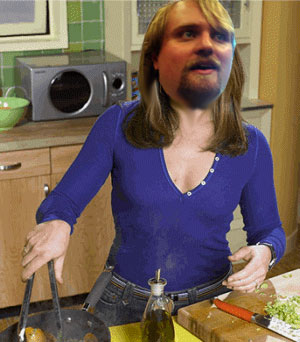
| 4 April 2008 Link to this update Original B.net link Return to main page | << | >> |
Bungie Weekly Update: 4/04/08
Posted by lukems at 4/4/2008 3:45 PM PDT
Legendary Forge
Over the last month we’ve brought a modest trickle of information about the Legendary Map Packs (due April 15th, watch the trailer or download it here) and B.net trainspotters have picked up on our relative silence about one of the big “talking points” from the previous Map Pack, Forge. While the Legendary Map Pack doesn’t feature a map that you can build from scratch a la Foundry it does have a pretty unique series of Forge objects and some new knicks and knacks for Legendary purchasers to tool around with.
To plumb these depths a little further, I grabbed some adults to answer a handful of questions about Forge’s role in the Legendary Maps. Designer Lars Bakken and artists Jason Sussman and Cameron “cinnamon” Pinard responded with all haste.
With the Heroic Map Pack, we gave users the Foundry, a Forge Playground. This time we’ve reworked two classic maps and have an all new map to show, what are the Forge Objects like for each of the new maps?
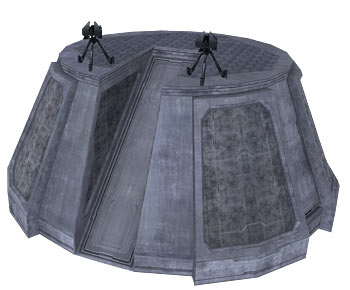 Avalanche
Avalanche
Lars Bakken: We have some simple things like tweaked shipping containers (they don’t move around anymore once settled). There are also forerunner walls, corners, and a sweet little sniper perch. There are also Energy Blockers that fit in the openings; so for instance, if you wanted to cut off a route through the center you could do that now. They are like a solid version of the shield door, so nothing can get through them and they fit snugly in the door frames.
Jason Sussman: With Avalanche I wanted to make some of the same wall type pieces that I made in Foundry but with more of the Forerunner style to help match it with the existing geometry. I also created tower pieces that you could piece together to make Dr. Bone Knees Tower of power.
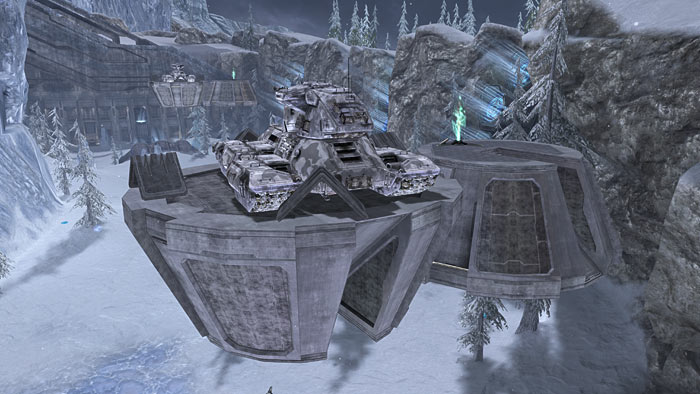
Watchtowers suspended by magic.
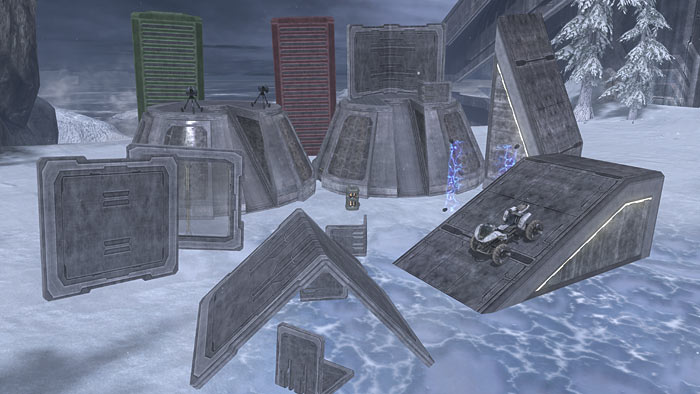
Forerunner-themed trouble making.
Blackout
LB: The map is human themed now, so we used some of the existing Foundry stuff with minor alterations. We also put in a door that lets you block off basically any of the separate buildings. Want to make a version of Blackout with the BR tower interior totally blocked off? You can now.
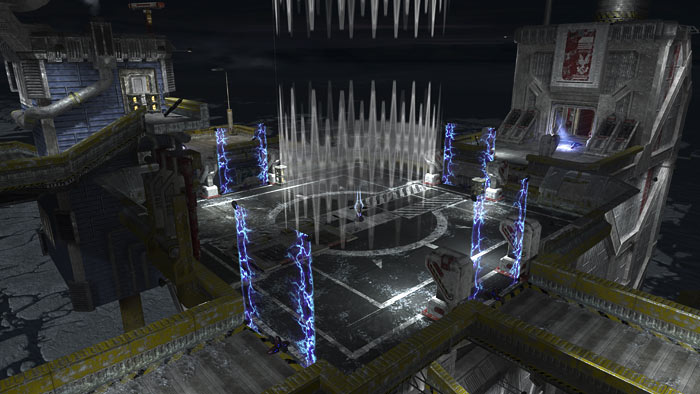
The worst Halo map ever: Stoshout. Designed for King of the Hill with a Hill that elevates ever so slightly over time, this shield door protected platform is a tomb where fun goes to die.
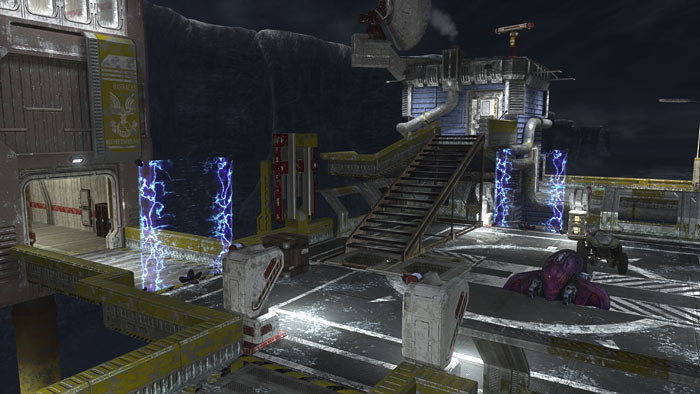
What a monstrosity, vehicles on Blackout. How could you do this to us Bungie? Another non-standard, non-default, don't worry you won't have to see this in Team Slayer version of Blackout.
Ghost Town
LB: There are some cool ramps and bridges and also a scaffolding platform. Basically a lot of ways to make some new routes and block off existing ones. The objects try to use the existing world objects where they can, so you’ll see lots of wood and metal.
Cameron Pinard: Because of the size and layout of Ghost Town there isn’t a lot of flexibility with forge objects, that said we tried to include as many interesting things as possible and keep visually similar to Ghost Town. There are a number of blocks and barricades as well as a few platform-like objects that we haven’t seen as many of on other maps.

How are objects created for Forge? What’s the process from concept to implementation? What’s the hardest part about creating Forge objects?
LB: They are created by the artists. Hahahaha… Seriously though, we usually try to think first what does this map need, and come up with a quick list of objects. We try to think like the Forgers out there and give them things that are useful. You’ll notice that we definitely have more building-type items now and less decorator style objects.
CP: Forge objects generally get made by a 3D artist, a lot of times these are added toward the end of production of a map so that we can pull finished or near finished assets from the level and use them. Some of the more unusual forge objects are conceived at some point during development to either solve a specific problem (blocking the door in foundry for example) or because we think it would be cool to have (the soccer ball). Occasionally we’ll have some specific target ahead of time like the crates on foundry that had to serve a particular purpose.
The most frustrating thing I’ve found making Forge objects is that we have to localize their names, this means that we have to have a clear idea of what the object is and what it is called earlier. This can be really frustrating when you have a sudden moment of brilliance later in development cycle and are unable to add things in. There are some other difficulties in creating forge objects, for instance you have to finish all sides of an object, the process is very different from creating an environment object, and because we have to account for players completely filling the map with all the given objects, we have to be somewhat budget conscious.
JS: When we are looking to create objects in forge we will basically try to make items that can be used in various ways. So we will usually start with basic primitives such as a box or cylinder then we will move onto items like walls and bridges. We will also try and make things that match the map that they are being placed in as best as possible. For example the objects in Foundry were built with the specifications set by the map layout. But they had to be versatile enough that players can move things around to make all types of scenarios. We also try to think of goofy or cool things we would like to set up and do when we customize our own maps. So then we will make a few other objects based upon ideas folks have.
Going forward we are taking a close look at how people are using forge items and using that information to make new and better Forge objects in addition to the standard ones that have been created.
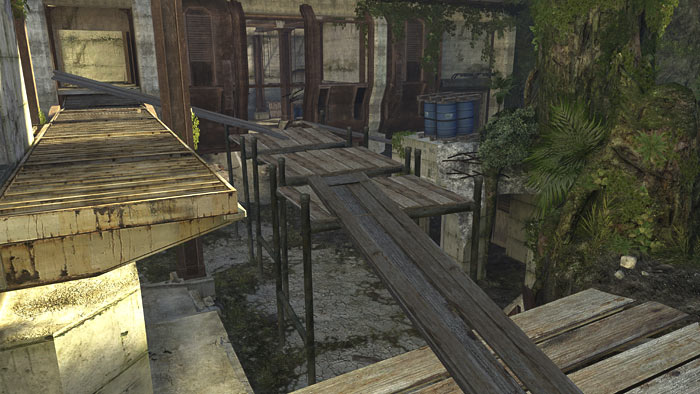
With Ghost Town's Forge objects, artists invested heavily in the painstaking work of making the wooden planks and catwalks completely match the environment. Without knowing the maps, it will be difficult for folks to tell what's been added in via Forge and what is existing geometry. The planks and connected platforms in the foreground are just a couple of Ghost Town's new Forge objects. With just a few planks and walkways, players will be able to make considerable changes to the way Ghost Town plays and those seemingly small changes could have drastic ramifications on how the map plays.
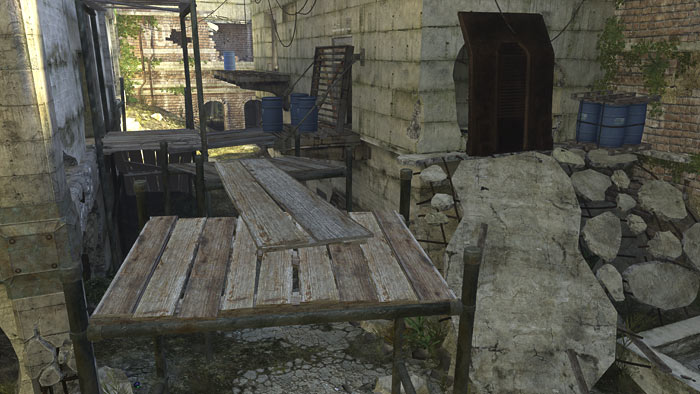
There are some brand new objects in the Forge this time around. What are they? How will they change the Forge and gameplay?
CP: The biggest new things are the Forge filters, these are forge objects that change the camera settings to create a variety of effects. I think some of them will be useful for adding a little bit of a different flavor to custom maps, but the main intended use was for those who are interested in creating cool screenshots and films. Our Community’s machinima makers should get a kick out of them.
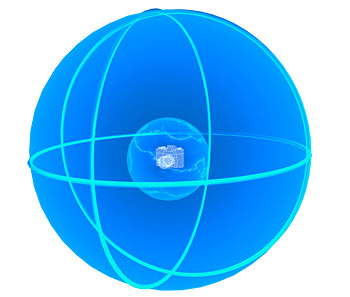
Where did the idea for the Forge filters come from?
LB: If I recall correctly, they grew out of the crazy screens people are taking in-game through the Films. We saw a lot of people putting the camera in really specific locations to get awesome effects to change how the game looked. Cam was messing around with the idea one day, and it looked pretty cool. We also wanted to give players some extra knobs to tweak.
CP: At some point during DLC 2’s production the question came up of “what crazy new Forge thing are we going to make this time around?” I compiled a list of things I thought we could do and would be interesting, one of the ideas there was a way to change the various camera settings, something we’ve had control of for a while but I thought it would be cool to give to users. Barry went over the list and picked out a few that really stuck out for him he suggested I take a look at the camera effects object we’d used previously for grenades and equipment. During this time we’d all been really impressed by some of the great screens people were getting using the limited grenade/equipment set, in the end we wanted to both bring that to more users and really expand the abilities of the people already taking great shots.
To illustrate and illuminate some of the differences in the various Forge filters Stosh took the same screenshot over and over and over, and only changed the screenshot filters before taking the picture. The screen effects are just Forge objects, placed like any other object. Then, to take a screenshot using the screen effect players just have to simply watch their Saved Film and take a screenshot as you normally would -- the screen effect is applied to the whole map in the Saved Film (and during gameplay).

Normal screenshot. Default. Basic.
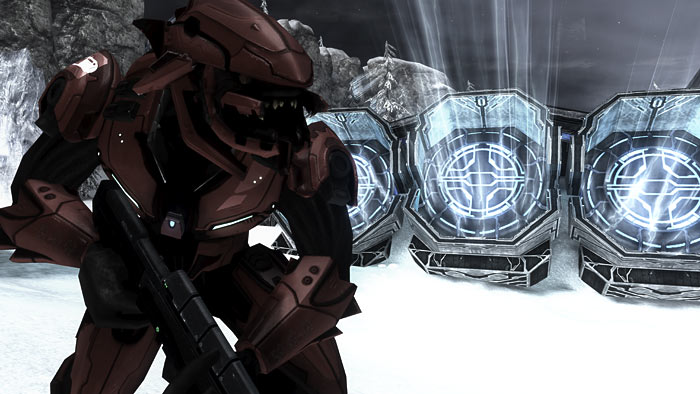
Screen effect: Gloomy
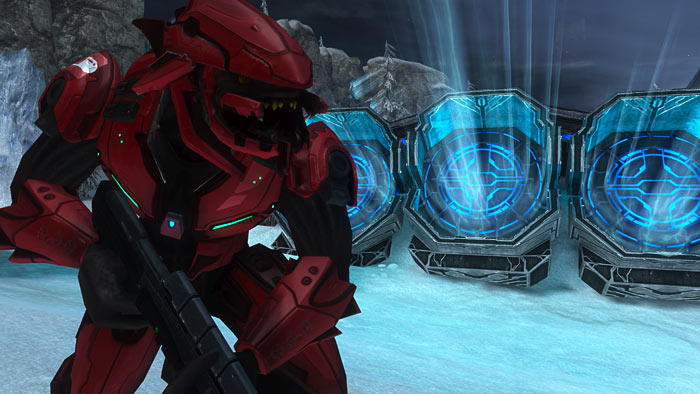
Screen effect: Juicy
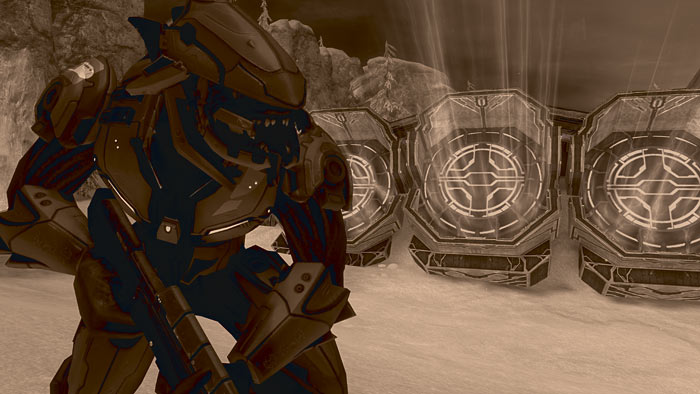
Screen effect: Old Timey
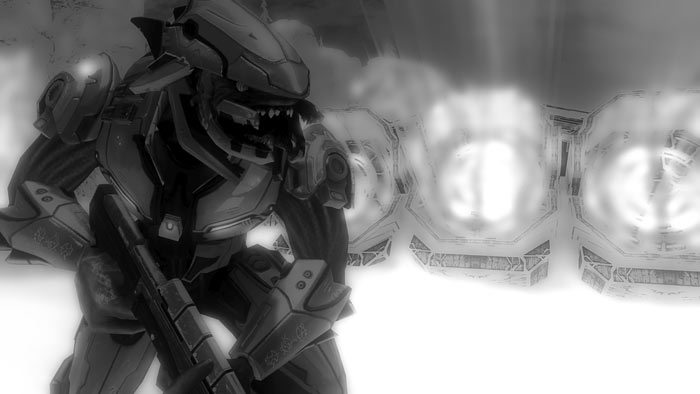
Screen effect: Pen & Ink

Screen effect: Nova
We're Still Hiring and How
As our Jobs page conveys, we're hiring all kinds of folks for a bunch of tasks here at Bungie. But some of those jobs we've posted have been filled. David Aldridge is one of our new engineering hires at Bungie. In addition to his bringing his programming prowess, David brings a steady stream of pastries with him to Bungie; our tastebuds and your online experience rejoice!
What do you do here at Bungie? What does that entail?
I’m a Network Engineer. That means I work on implementing and improving the technology behind current and future Bungie online experiences. That technology includes things like transport (getting data from one X360 to another efficiently), replication (synchronizing a game world across many peers asynchronously while using a minimum amount of bandwidth), and matchmaking mechanics. I’m one of the guys who feels bad every time you experience lag.
What makes a good end user experience when it comes to networking? How can games get better at achieving an optimum experience?
Our goal is to get each player into an enjoyable multiplayer session as quickly as possible. We want the player to experience no lag during that session. On top of that, there are many interesting meta-game elements of the experience that we want to optimize. For example, we want to avoid matching normal players with griefers. We want to avoid matching people who don’t like profanity with people who enjoy a good blue streak with their Halo. We want players to be able to avoid game types they don’t like (!#%& oddball!), but we also want to expose them to new game types that might become future favorites. We want players to be motivated to play their first, tenth, hundredth, and thousandth game.
What did you study in college? What advice do you have to all of lil hoppas out there who want to make games? How can they get into the game industry?
I studied Computer Science. I focused on AI in my undergraduate work, and graphics and AI in my graduate program.
If you want to become a video game programmer, you must first become a great programmer. The most reliable current way to do this is to enter a Computer Science program at a university, don’t skip classes, study and work hard, and become one of the top students in your class. Don’t worry too much about getting into a top-ranked school – the motivation and talent you bring with you will serve you better than all the Ivy League trappings in the world.
Hundreds of top Computer Science students try to break into the game industry every year. How can you separate yourself from the pack? One very effective way is through personal projects. A candidate with a 3.5 GPA and an impressive self-developed game demo is often more impressive than a candidate with a 4.0 GPA and no personal game work. Personal projects show your enthusiasm for and commitment to making games, and can also demonstrate your skill in working in larger systems than are seen in collegiate projects.
Other things that help are playing a lot of games, reading GDC papers and presentations, reading articles on video game development forums like GameDev and GamaSutra, and reading physics books in your spare time.
Was there a single game or moment when you realized that you wanted to make games? How’d you get into this line of work?
When I first played X-Wing, in March of 1993, I knew I wanted to make games. 5 years later, when it came time to pick a college major, I decided my best shot at making games was leveraging my love of computers and math and becoming a programmer (also, I hated creative writing and had no artistic taste, talent, or inclination). I was persistent (and lucky) enough to get an internship with a local game company in Los Angeles in my junior year, and the rest is history.
What are some of your favorite games?
Battlezone for the PC (1998). One of the best RTS/action hybrids ever. Disappointingly unbalanced multiplayer, but an utterly superb single player experience.
BioShock. THE must-play RPG/shooter/System Shock 3 of 2007.
Homeworld. Idyllic space war has never been so beautiful, or so strategically deep.
Love, Frankie
Frankie took time from having his brain vacuumed and becoming a true and proper 'merican this week to send this contribution in to the Weekly Update. It's strangely appropriate as Shishka is the new chef of playlists and there will be more lifting the lid off of his playlist stew soon enough.
